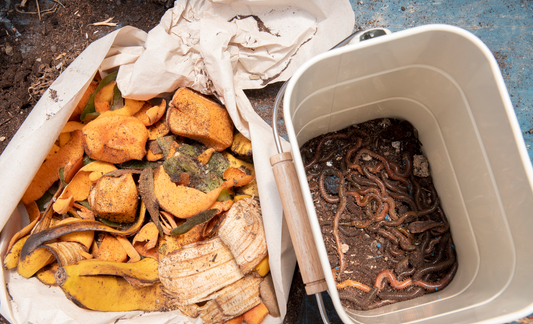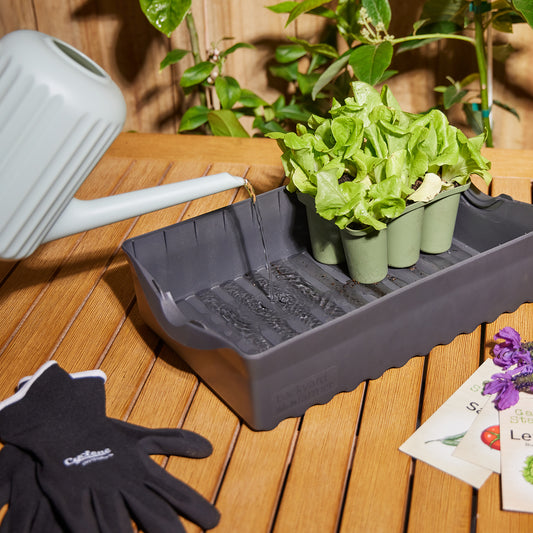
Tools and Techniques for Indoor Farming Success

Ready to enjoy the taste of homegrown goodness?
Establishing your indoor garden is easier than you might think. Let's break it down into simple steps, you'll just need a few essentials to get started.
A dedicated seed-sprouting and growing kit like our Backyard Farmer Seed Raising Kit is a great place to start. You'll also need a hand trowel like this one from Cyclone when you're ready to transfer your plants to bigger pots.
As your plants grow, you'll need to harvest them regularly. For softer produce like basil and coriander, Cyclone's Floral Snips will do the trick. But for thicker herbs like rosemary, investing in a quality tool like Cyclone's Heavy Duty Bypass Pruner, will keep your plants healthy and in good shape.
Now, let's talk watering. It's crucial, but it doesn't have to be complicated. There are three ways you can do it: misting, top watering, and self-watering.
Misting
Misting is a great way to increase humidity and dampen soil when growing food indoors. Simply, fill a misting bottle with water and gently spray your plant leaves. It's especially good for herbs like basil and coriander. A misting bottle like this one from Nylex is handy when propagating seeds.
Top Watering
Top watering is a common and easy way to water your indoor plants. Use a watering can to pour water on the soil until it starts to drain from the bottom. Perfect for plants like chillies and rosemary – it helps their roots soak up water without getting waterlogged.
Self-Watering
Self-watering pots like Northcote Pottery's Self-Watering Egg Pot are a convenient option for indoor gardening. The pot has a tiny water tank at the bottom that keeps your soil moist. Great for leafy greens like lettuce, spinach, and kale, as well as cherry tomatoes, as it helps prevent over or under watering.
No matter how you water, keep an eye on your plants. Water them when the top inch of soil feels dry, and don't let them sit in water for too long as it can lead to root problems.
Remember, indoor gardening is a learning journey. Every plant is different, so observe and experiment.
Happy gardening!

